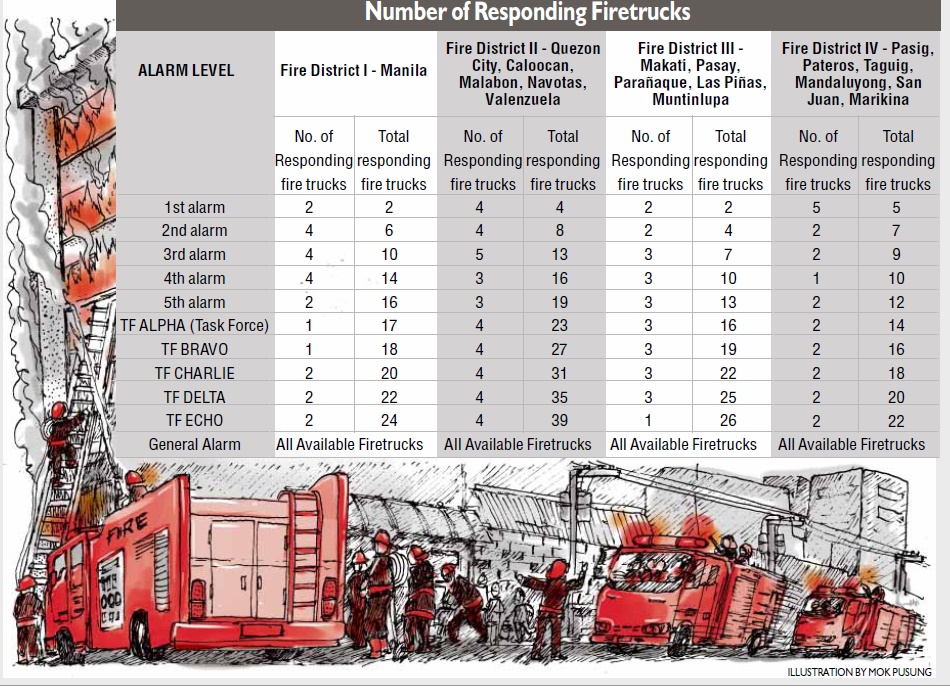THE DECISION on which alarm level to call during a fire initially depends on the assessment of the Fire Ground Commander who heads the substation which has jurisdiction over of the area. In Metro Manila, each city (or municipality, in the case of Pateros) has a substation, except Manila which has one substation for each of its 14 districts.
The 1st, 2nd and 3rd alarms are the responsibility of the substation. If the Ground Commander decides that the alarm should be raised to the fourth level, the District Fire Marshal should be alerted.
The district level is responsible for the 4th and 5th alarms. It is the District Fire Marshal’s responsibility to assess the situation and decide if the alarm should be raised to Task Force.
The Task Force alarm levels are handled by the Regional Director, who decides whether a general alarm should be called.
The Bureau of Fire Protection says it is very rare that a general alarm is declared. At this level, even supporting fire trucks from other fire districts could also be dispatched.
Below is a matrix of the number of fire trucks that respond to each type of alarm. The table should be read as follows: In Manila, for example, the 1st alarm has only two responding fire trucks. Should the call be raised to 2nd alarm, four more fire trucks will be added, thus a total of six will be responding. In the same manner, should the alarm be elevated to the third alarm, four more trucks would be added, meaning a total of 10 would respond, and so on.
Inquirer Research
Source: Bureau of Fire Protection


